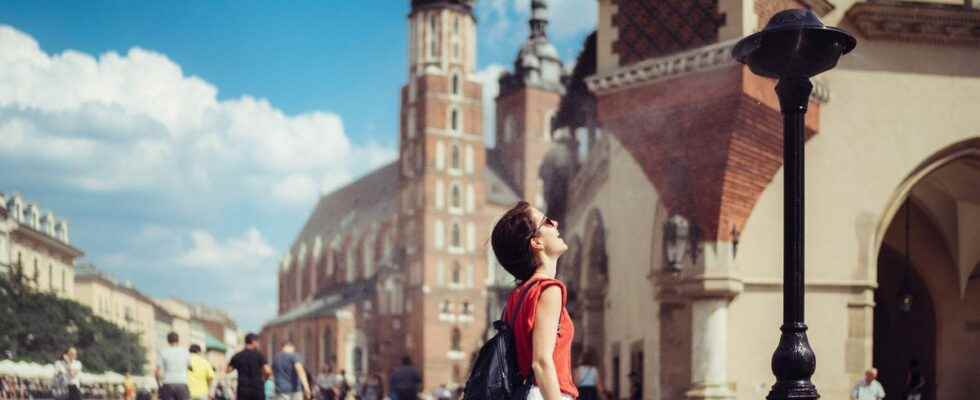Posted ,
Reading 3 mins.
Tarred roads, lack of vegetation, heat rejection from air conditioners… while urban centers are transformed during heat waves into real radiators, there are more and more ways to reduce the discomfort of city dwellers, who are more asphyxiated than in the countryside. .
Urban microclimate
In the countryside, vegetation uses the sun and water from the soil for photosynthesis, then returns the water drawn from the soil to the atmosphere. At night, this “evapotranspiration” stops.
But in the city, largely impermeable surfaces store solar energy. And during the night, these buildings, asphalt roads and sidewalks release the accumulated heat into the air.
As a result, it is often hotter in a city than on the outskirts, with even greater differences during heat waves and at night, which can be up to several degrees warmer than in the surrounding countryside.
This mechanism is known as “urban heat islands” (ICU), but it becomes “urban overheating” when the thermal discomfort of the inhabitants is added to it, which also depends on more individual parameters (age, housing under poorly insulated roofs, metabolism, etc.).
With major health impacts. “The situation of city dwellers subjected to these extreme conditions can lead to heatstroke and dehydration until the death of the most fragile people.“, underlines the Ademe in its guide “Refresh the cities”.
For example, during the historic heat wave of 2003 which killed more than 15,000 people in France, excess mortality reached 141% in Paris or 80% in Lyon, against 40% in small and medium-sized towns, according to Public Health France.
Identified factors
The factors favoring these urban “heat bubbles” are known: a lot of mineral and dark artificial surfaces that absorb heat, not enough vegetation, properties of building materials, insufficient presence of water, human activities, orientation of buildings, shape towns…
Not to mention the vicious circle of air conditioning which, by cooling those who can afford it, warms the outside air through its emissions.
Solutions
The question of urban cooling is still a recent but crucial area of research at a time when urban heat islands risk amplifying the effects of heat waves which are multiplying and intensifying with global warming.
Solutions exist to burst these heat bubbles, as Ademe explains in its guide which presents 19 types of “emerging or proven” measures from which cities can choose according to their specificities.
First of all, solutions based on nature, in short vegetation and water: development of parks that form true islands of freshness, planting of trees for shade, green roofs for interior comfort, green facades to limit the discomfort of pedestrians, or bodies of water and rivers with their vegetated banks.
Among the “grey” solutions, Ademe highlights in particular “bioclimatic” urban forms that allow better air circulation, watering of urban space, shading structures, solar panels to replace surfaces that store heat or draining coatings, building insulation.
Last track mentioned, the “soft” solutions related to the use of the city, such as the reduction of road traffic and heat engines that produce heat or even the limitation of air conditioning.
Consult a dermatologist online
no miracles
But beware, “no solution can solve the problem of urban overheating alone”, warns Ademe, which suggests a combination of several solutions.
“It is therefore important to take into consideration the fact that some solutions are not compatible, or even cancel each other out, while others will act in synergy.“.
It is also necessary in the choice of possible solutions to look into the desired effect of each solution: global cooling of the city or on the scale of the comfort of the pedestrian.
Thus, for example, fountains and water jets have a strong impact on thermal comfort but none on the scale of the city.
On the contrary, light-reflecting coatings (white paint or innovative materials) on floors, walls or roofs, reduce the urban heat island but can create discomfort for passers-by due to radiation.
